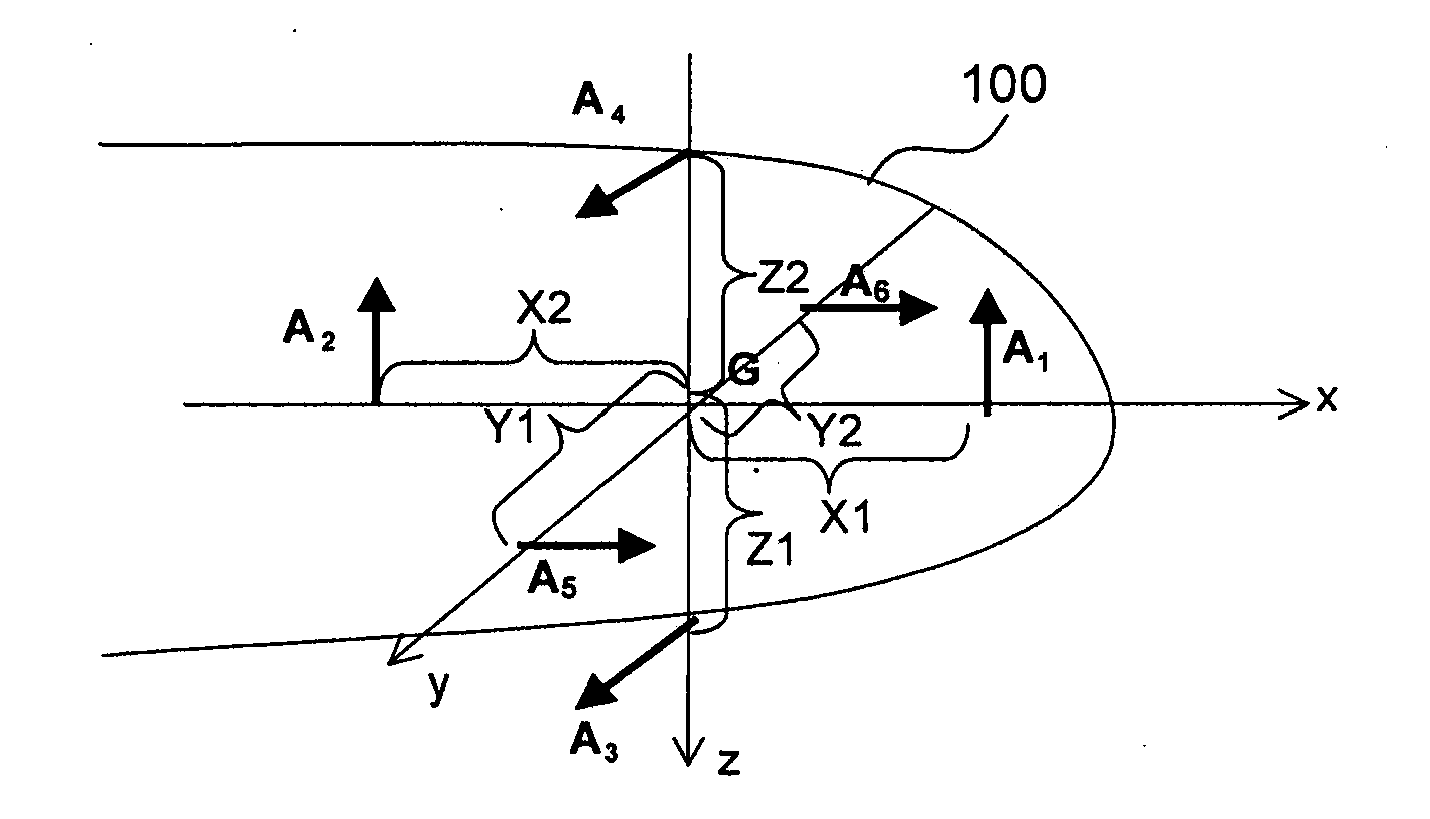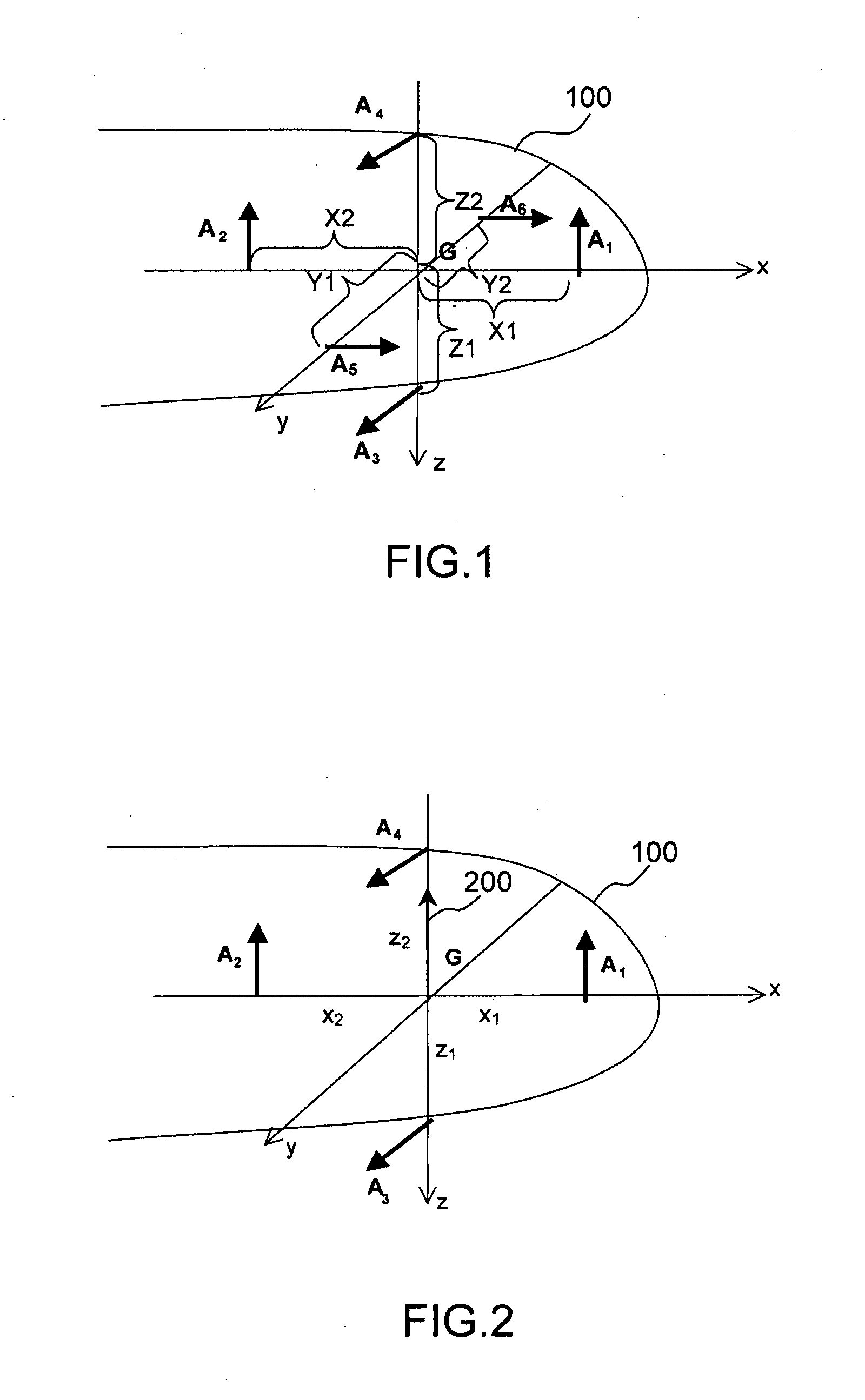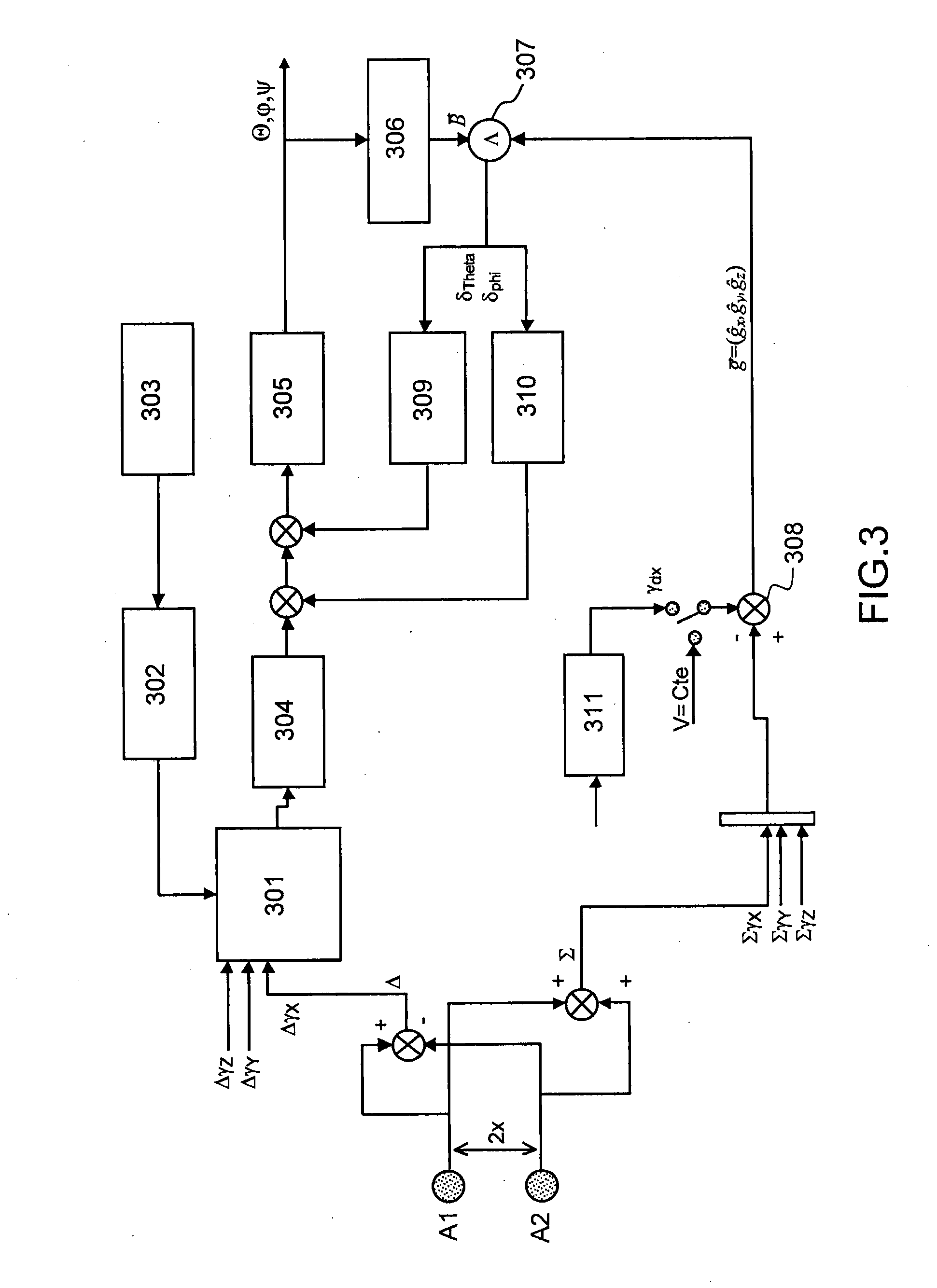Method and system for determining the attitude of an aircraft by multi-axis accelerometric measurements
a multi-axis accelerometric and aircraft technology, applied in the direction of process and machine control, instruments, navigation instruments, etc., can solve the problems of aircraft damage, stalling and falling, aircraft not flying safely,
- Summary
- Abstract
- Description
- Claims
- Application Information
AI Technical Summary
Benefits of technology
Problems solved by technology
Method used
Image
Examples
Embodiment Construction
[0032]FIG. 1 shows diagrammatically, in a schematic, the inertial system according to the invention in a first embodiment. The latter is composed of three pairs of mono-axis accelerometers (A1,A2), (A3,A4), (A5,A6) disposed on an aircraft 100 in a fixed reference frame {x,y,z} with respect to this aircraft. In FIG. 1, the six accelerometers are each represented by an arrow oriented in the direction of their respective sensitive axes, that is to say the direction in which the acceleration of the aircraft is measured. The x axis is substantially merged with the longitudinal axis of the aircraft 100, the y axis is substantially merged with the transverse axis of the aircraft 100 and the z axis is a vertical axis perpendicular to the plane formed by the y and z axes.
[0033]The point G represented in FIG. 1 is situated approximately at the centre of gravity of the inertial system according to the invention. The first pair of accelerometers (A1,A2) is disposed on either side of the point G...
PUM
 Login to View More
Login to View More Abstract
Description
Claims
Application Information
 Login to View More
Login to View More - R&D
- Intellectual Property
- Life Sciences
- Materials
- Tech Scout
- Unparalleled Data Quality
- Higher Quality Content
- 60% Fewer Hallucinations
Browse by: Latest US Patents, China's latest patents, Technical Efficacy Thesaurus, Application Domain, Technology Topic, Popular Technical Reports.
© 2025 PatSnap. All rights reserved.Legal|Privacy policy|Modern Slavery Act Transparency Statement|Sitemap|About US| Contact US: help@patsnap.com



